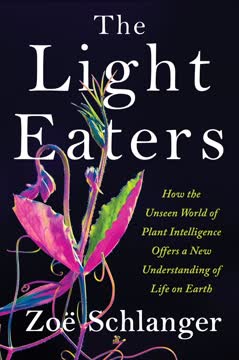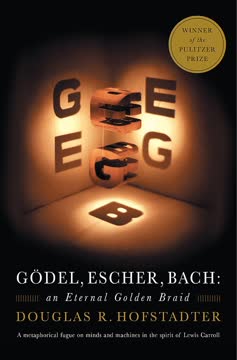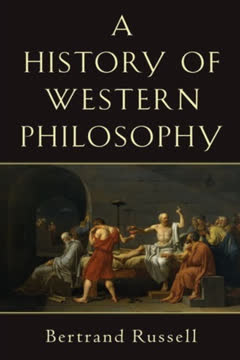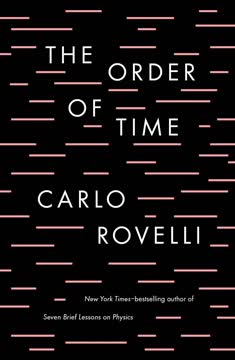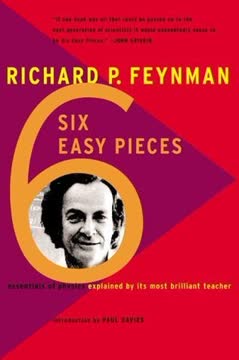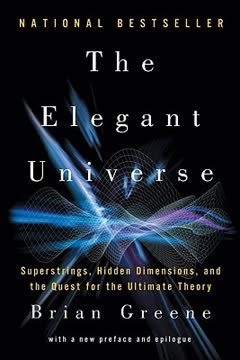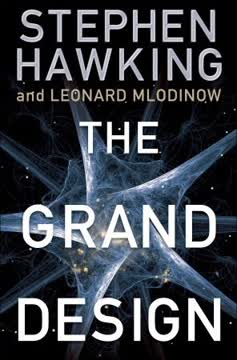نکات کلیدی
1. ضد ماده: تصویر آینهای ماده
ضد ماده سایهای عجیب و وارونه از ماده است، مانند دو شخصیت توییدلدی و توییدلدام، جایی که چپ به راست تبدیل میشود و مثبت به منفی.
همتای بنیادی. ضد ماده کاملاً مخالف ماده معمولی است و دارای خواص یکسانی است به جز بارهای الکتریکی معکوس. برای هر ذره ماده، یک ضد ذره از ضد ماده وجود دارد:
- الکترون (بار منفی) → پوزیترون (بار مثبت)
- پروتون (بار مثبت) → آنتیپروتون (بار منفی)
- نوترون (خنثی) → آنتینوترون (خنثی، اما ساختار داخلی معکوس)
پیشبینی دیراک. در سال 1928، معادله فیزیکدان پل دیراک که مکانیک کوانتومی و نسبیت خاص را ترکیب میکرد، وجود ضد ماده را پیشبینی کرد. این پیشرفت نظری پایهگذار درک ما از ضد ماده و رابطهاش با ماده بود.
2. کشف پوزیترونها و آنتیپروتونها
آندرسون در سال 1932 با وجود تردیدهای میلیکین، به اندازه کافی مطمئن بود که نتیجهی اولیهاش را بهطور عمومی اعلام کند و در دسامبر پیشین در نشریه Science News Letter به آن اشاره کرد. شانس به نفع شجاعان است.
کشف پوزیترون. کارل آندرسون در سال 1932 پوزیترون را در حین مطالعه پرتوهای کیهانی با استفاده از یک اتاقک ابر کشف کرد. او ردهایی را مشاهده کرد که در جهت مخالف الکترونها منحنی شده بودند، که نشاندهنده وجود ذرهای با بار مثبت و با همان جرم الکترون بود.
تأیید آنتیپروتون. آنتیپروتون در سال 1955 توسط امیلیو سگره و اوون چمبرلین در دانشگاه کالیفرنیا، برکلی، با استفاده از شتابدهنده ذرات کشف شد. این کشف:
- پیشبینی دیراک درباره ضد ماده را تأیید کرد
- جایزه نوبل فیزیک 1959 را برای سگره و چمبرلین به ارمغان آورد
- راههای جدیدی برای تحقیقات فیزیک ذرات گشود
3. نابودی: وقتی ماده با ضد ماده ملاقات میکند
ضد ماده هر مادهای را که با آن تماس میگیرد در یک درخشش آتشبازی نابود میکند، آزادسازی انفجاری تمام انرژی که برای میلیاردها سال در آن قفل شده بود.
آزادسازی انرژی. وقتی ذرات ماده و ضد ماده به هم برخورد میکنند، یکدیگر را نابود میکنند و کل جرم خود را به انرژی تبدیل میکنند طبق معادله معروف انیشتین E=mc². این فرآیند مقدار زیادی انرژی آزاد میکند:
- 1 گرم ضد ماده + 1 گرم ماده = معادل 43 کیلوتن TNT
- قابل مقایسه با بمب اتمی که بر روی هیروشیما انداخته شد
محصولات نابودی. نتیجه نابودی ماده و ضد ماده به ذرات درگیر بستگی دارد:
- الکترون-پوزیترون: تولید اشعه گاما
- پروتون-آنتیپروتون: تولید پیونها که سپس به ذرات و تابشهای دیگر تجزیه میشوند
این فرآیند برای درک جهان اولیه و همچنین کاربردهای بالقوه در تصویربرداری پزشکی و فناوریهای انرژی آینده اهمیت دارد.
4. ذخیرهسازی ضد ماده: چالشها و پیشرفتها
برای درک اندازه کوچک اتمها، به نقطهای در انتهای این جمله نگاه کنید؛ این نقطه حاوی حدود 100 میلیارد اتم کربن است، عددی بسیار بزرگتر از تمام انسانهایی که تاکنون زندگی کردهاند.
موانع ذخیرهسازی. ذخیرهسازی ضد ماده به دلیل تمایل آن به نابود شدن با ماده معمولی بسیار چالشبرانگیز است. دانشمندان روشهای هوشمندانهای برای غلبه بر این مشکل توسعه دادهاند:
- تلههای پنینگ: استفاده از میدانهای الکترومغناطیسی برای معلق نگهداشتن ضد ذرات باردار در یک خلا
- شتابدهنده آنتیپروتون (AD) در سرن: کاهش سرعت آنتیپروتونها برای آزمایشها
- اتمهای آنتیهیدروژن: اتمهای ضد ماده خنثی که با ترکیب آنتیپروتونها و پوزیترونها ایجاد میشوند
نقاط عطف در ذخیرهسازی ضد ماده:
- 1995: اولین اتمهای آنتیهیدروژن در سرن ایجاد شدند
- 2002: تعداد زیادی اتم آنتیهیدروژن تولید شد
- 2010: آنتیهیدروژن به مدت 1/10 ثانیه به دام افتاد
- 2011: آنتیهیدروژن به مدت بیش از 16 دقیقه به دام افتاد
این پیشرفتها امکان مطالعات دقیقتری از خواص ضد ماده و مقایسه آن با ماده معمولی را فراهم کرده است.
5. عدم تقارن بین ماده و ضد ماده
K کمی سریعتر از فرآیند معکوس به K تبدیل شد. این نشان میدهد که یک جهت ذاتی برای تیر زمان وجود دارد حتی در سطح ذرات بنیادی، زیرا میتوانستید بگویید که فیلم نوسان ضد K به K در کدام سمت پخش میشود.
نقض CP. در سال 1964، جیمز کرونین و وال فیتچ کشف کردند که برخی ذرات به نام کائونهای خنثی در رفتار خود نسبت به ضد ذراتشان عدم تقارن جزئی را نشان میدهند. این پدیده که به آن نقض CP گفته میشود، نشان میدهد که قوانین فیزیک بهطور کامل بین ماده و ضد ماده متقارن نیستند.
پیامدها. این عدم تقارن پیامدهای عمیقی دارد:
- این میتواند توضیحی برای عدم تعادل ماده و ضد ماده در جهان باشد
- این چالشهایی برای درک ما از فیزیک بنیادی ایجاد میکند
- این نشان میدهد که زمان ممکن است در سطح ذرات یک جهت ترجیحی داشته باشد
آزمایشهای اخیر با بوزونهای B عدم تقارنهای بزرگتری را نشان دادهاند که ایده عدم تقارن بین ماده و ضد ماده را بیشتر تأیید میکند.
6. معمای ضد ماده گمشده در جهان
معما کمتر درباره این است که چرا ضد ماده ناپدید شده و بیشتر درباره این است که چرا ماده زنده مانده است؟
عدم تعادل کیهانی. نظریه بیگ بنگ پیشنهاد میکند که مقادیر برابر از ماده و ضد ماده باید در آغاز جهان ایجاد شده باشد. با این حال، مشاهدات نشان میدهد که جهان ما تحت سلطه ماده است و مقدار بسیار کمی ضد ماده وجود دارد.
توضیحات ممکن:
- باریوژنز: فرآیندی در جهان اولیه که مقدار کمی اضافی از ماده نسبت به ضد ماده ایجاد کرد
- نقض CP: عدم تقارن مشاهده شده در رفتار ذرات میتواند به تسلط ماده منجر شده باشد
- لپتوژنز: نوترینوها ممکن است نقشی در ایجاد عدم تعادل ماده و ضد ماده داشته باشند
تحقیقات در حال انجام. دانشمندان در حال انجام آزمایشهایی هستند تا:
- خواص ضد ماده را با دقت بالا اندازهگیری کنند
- به دنبال ضد ماده اولیه در پرتوهای کیهانی بگردند
- خواص نوترینوها و نقش بالقوه آنها در جهان اولیه را بررسی کنند
درک این عدم تقارن کیهانی یکی از بزرگترین مشکلات حلنشده در فیزیک و کیهانشناسی باقی مانده است.
7. ضد ماده در داستانها و واقعیت: افسانهزدایی از اسطورهها
این «حقایق» در بهترین حالت گمراهکننده و حتی نادرست هستند، اما محبوبیت رمان براون باعث شده است که بسیاری آنها را حقیقت بدانند.
مفاهیم نادرست رایج. داستانهای محبوب و رسانهها اغلب ضد ماده را بهطور نادرست به تصویر میکشند و منجر به افسانههای گستردهای میشوند:
- ضد ماده به عنوان منبع انرژی نامحدود
- بمبهای ضد ماده به عنوان سلاحهای پاک و بدون تابش
- تولید و ذخیرهسازی ضد ماده به مقیاس بزرگ
واقعیت:
- تولید ضد ماده به انرژی بیشتری نسبت به انرژی آزاد شده نیاز دارد
- نابودی ضد ماده تولید تابش گامای شدید میکند
- تولید کنونی ضد ماده بسیار محدود و پرهزینه است
- ذخیرهسازی مقادیر زیاد ضد ماده فراتر از فناوری کنونی است
کاربردهای علمی. در حالی که ضد ماده برای تولید انرژی یا سلاحها مناسب نیست، دارای کاربردهای علمی و پزشکی ارزشمندی است:
- تصویربرداری با توموگرافی انتشار پوزیترون (PET) در تصویربرداری پزشکی
- مطالعه فیزیک بنیادی و جهان اولیه
- کاربردهای بالقوه آینده در پیشرانه فضاپیما (نظری)
تشخیص بین داستانهای علمی تخیلی و وضعیت واقعی تحقیقات ضد ماده برای درک اهمیت و پتانسیل واقعی آن ضروری است.
آخرین بهروزرسانی::
FAQ
What is "Antimatter" by Frank Close about?
- Comprehensive exploration of antimatter: The book provides a thorough overview of antimatter, its scientific discovery, properties, and significance in both science and popular culture.
- Fact vs. fiction: Frank Close addresses common misconceptions and myths about antimatter, especially those popularized by media and fiction, and contrasts them with scientific reality.
- Historical and scientific journey: The narrative traces the history of antimatter from theoretical prediction to experimental discovery, including key figures like Paul Dirac and Carl Anderson.
- Implications and applications: The book discusses the potential uses of antimatter in medicine, energy, and weaponry, as well as its role in understanding the universe.
Why should I read "Antimatter" by Frank Close?
- Clarifies misconceptions: The book debunks widespread myths about antimatter, especially those stemming from science fiction and sensational media reports.
- Accessible science writing: Frank Close explains complex physics concepts in a way that is approachable for non-specialists, making it suitable for general readers interested in science.
- Historical context: Readers gain insight into the personalities, experiments, and theoretical breakthroughs that shaped our understanding of antimatter.
- Relevance to current debates: The book addresses contemporary issues such as antimatter weapons, energy production, and the search for antimatter in the universe.
What are the key takeaways from "Antimatter" by Frank Close?
- Antimatter is real but rare: Antimatter exists and has been created in laboratories, but it is extremely scarce in the observable universe.
- Matter-antimatter asymmetry: The universe is dominated by matter, and the reasons for the disappearance of antimatter after the Big Bang remain one of science’s great mysteries.
- Practical uses are limited: While antimatter has applications in medical imaging (PET scans), its use as a power source or weapon is currently impractical due to production and storage challenges.
- Science vs. fiction: Many popular ideas about antimatter, such as its use in bombs or as a limitless energy source, are exaggerated or incorrect.
How does "Antimatter" by Frank Close define and explain antimatter?
- Mirror image of matter: Antimatter consists of particles that are identical to their matter counterparts except for opposite electric charge and certain quantum properties.
- Annihilation with matter: When antimatter meets matter, they annihilate each other, releasing energy in the form of gamma rays.
- Predicted by theory: The existence of antimatter was first predicted by Paul Dirac’s equations, which required the existence of particles with negative energy solutions.
- Examples of antimatter: The positron (antielectron) was the first antiparticle discovered, followed by antiprotons, antineutrons, and more complex anti-atoms.
What is the history of antimatter’s discovery according to "Antimatter" by Frank Close?
- Dirac’s prediction (1928): Paul Dirac’s theoretical work predicted the existence of antimatter, specifically the positron.
- Experimental confirmation (1932): Carl Anderson discovered the positron in cosmic rays, confirming Dirac’s theory.
- Subsequent discoveries: The antiproton and antineutron were discovered in the 1950s, and later, anti-atoms like antihydrogen were created in laboratories.
- Role of cosmic rays and accelerators: Early discoveries relied on cosmic ray observations and cloud chambers, while modern research uses particle accelerators.
How does "Antimatter" by Frank Close address the matter-antimatter asymmetry in the universe?
- Big Bang production: The book explains that the Big Bang should have produced equal amounts of matter and antimatter.
- Great Annihilation: Shortly after the Big Bang, matter and antimatter annihilated, leaving a small excess of matter that makes up the observable universe.
- Unsolved mystery: The reason for this asymmetry is still unknown, though subtle differences in particle behavior (CP violation) have been observed.
- Current research: The book discusses ongoing experiments and theories, such as the role of neutrinos and majorons, in explaining the imbalance.
What are the real-world applications of antimatter discussed in "Antimatter" by Frank Close?
- Medical imaging: Positron Emission Tomography (PET) scans use positrons to detect metabolic activity in the body, aiding in diagnostics.
- Scientific research: Antimatter is used in high-energy physics experiments to probe the fundamental laws of nature and recreate early universe conditions.
- Material science: Positron annihilation techniques help detect defects in materials, such as metal fatigue in aircraft components.
- Limitations: The book emphasizes that large-scale energy production or weaponization of antimatter is not currently feasible.
How does "Antimatter" by Frank Close separate fact from fiction regarding antimatter weapons and energy?
- Impractical as a weapon: The book explains that producing and storing enough antimatter for a bomb is far beyond current technology and would require immense resources.
- Energy inefficiency: Creating antimatter consumes much more energy than can be recovered from its annihilation, making it an inefficient power source.
- Media and military hype: Reports of antimatter weapons are often based on misunderstandings or speculative research, not practical reality.
- Science fiction influence: Popular works like Dan Brown’s "Angels and Demons" have fueled misconceptions about antimatter’s dangers and potential.
What scientific concepts and theories are central to "Antimatter" by Frank Close?
- Quantum mechanics and relativity: The book explains how the combination of these theories led to the prediction of antimatter.
- Dirac’s equation and negative energy: Dirac’s mathematical framework required the existence of antiparticles.
- Particle-antiparticle annihilation: The process by which matter and antimatter convert their mass into energy.
- CP violation and symmetry: The book discusses how small asymmetries in particle behavior may explain the dominance of matter.
How is antimatter produced, stored, and studied according to "Antimatter" by Frank Close?
- Production in accelerators: Antimatter is created by high-energy collisions in particle accelerators, producing antiparticles like positrons and antiprotons.
- Storage challenges: Antimatter must be kept from contacting matter, typically using magnetic and electric fields in devices like Penning traps.
- Antihydrogen creation: Laboratories like CERN have succeeded in creating and briefly storing antihydrogen atoms.
- Experimental limitations: Only minute quantities of antimatter have been produced and stored, far from the amounts needed for practical applications.
What are the most important quotes from "Antimatter" by Frank Close and what do they mean?
- “Antimatter is truly anti-matter.” – Emphasizes the fundamental opposition between matter and antimatter, leading to mutual annihilation.
- “The universe is built from basic particles, trapped in a never ending terpsichore by the natural forces…” – Highlights the dynamic, dance-like interplay of particles and forces in the cosmos.
- “The mystery is less about why antimatter has disappeared, and more a question of why has matter survived?” – Points to the central scientific puzzle of why the universe is made of matter.
- “With such inspirations in fact, who needs fiction?” – Suggests that the real science of antimatter is as fascinating as, or more so than, its fictional portrayals.
What is the significance of Paul Dirac’s work as presented in "Antimatter" by Frank Close?
- Theoretical prediction: Dirac’s equations predicted the existence of antimatter before it was observed, a major triumph of theoretical physics.
- Negative energy solutions: His work introduced the concept of negative energy states, leading to the idea of the “Dirac sea” and antiparticles.
- Symmetry in nature: Dirac’s theory revealed a deep symmetry between matter and antimatter, influencing later developments in particle physics.
- Legacy: The book credits Dirac’s insights as foundational to our understanding of the universe and the ongoing search for answers about matter’s dominance.
نقد و بررسی
کتاب ماده ضد نوشتهی فرانک کلوز بهطور کلی نقدهای مثبتی را بهخود اختصاص داده است، بهخاطر توضیحات قابلفهمش در مورد مفاهیم پیچیدهی فیزیک. خوانندگان از زبان روشن، روایت جذاب و رد افسانهها در این کتاب قدردانی میکنند. برخی بخشها برای برخی از خوانندگان چالشبرانگیز به نظر میرسد، اما بیشتر افراد به خاطر مختصر بودن کتاب و توانایی آن در سادهسازی موضوعات دشوار، آن را ستایش میکنند. زمینهی تاریخی و کاربردهای واقعی ماده ضد بهعنوان جنبههای جالب کتاب مورد توجه قرار گرفته است. در حالی که چند نفر از منتقدان اشاره میکنند که برخی از بخشهای کتاب ممکن است برای افراد غیرمتخصص دشوار باشد، اما بهطور کلی بهعنوان یک مقدمهی آموزنده به این موضوع مورد تحسین قرار میگیرد.
Similar Books

